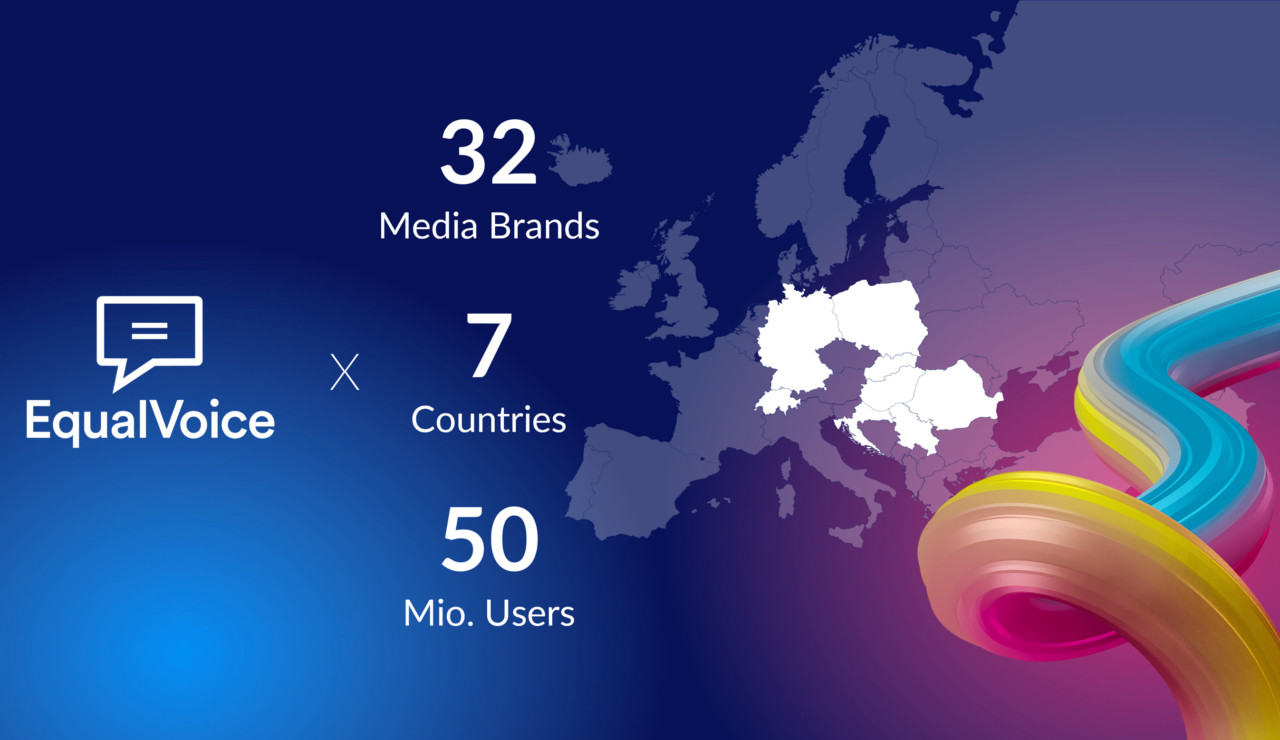Initiative

WHY
72% of all media reports in Switzerland are about men. According to the Global Media Monitoring Project 2020, the proportion worldwide is 75%. The goal of EqualVoice is to increase the visibility of women in the media, thereby closing the gender visibility gap, creating more female role models and giving women and men an equal voice.
EqualVoice advocates equal visibility of women and men in the media. We need more genuine and diverse role models so that the media represents reality.
You Can’t Be What You Cannot See
The EqualVoice initiative emerged from the need to enhance the visibility of women in the media, a pivotal aspect of gender equality. Publisher Michael Ringier and Ringier CEO Marc Walder chair the initiative, which was launched in November 2019 by Ringier CFO Annabella Bassler and co-founded by Katia Murmann, former editor-in-chief of blick.ch.

WHAT
Instead of promoting quotas, Ringier is using its journalistic and technological power to advocate gender equality. At the heart of the initiative is the EqualVoice-Factor. It measures the visibility of women in media and communication content using a specially developed semantic algorithm. The EqualVoice-Factor can analyze text, images, and videos. The measurement method of the EqualVoice Factor has been validated by ETH Zurich, providing scientifically documented proof.
The EqualVoice-Factor utilizes a variety of technologies, such as Natural Language Processing (NLP) and other Artificial Intelligence (AI) services. An internal mechanism (Threshold) monitors the accuracy (Precision & Recall) of the model’s responses.
The semantic analysis at the heart of the system recognizes how often women and men are depicted in the media and aggregates this data into an EqualVoice-Factor.
The algorithm generally identifies individuals (entities) and also recognizes the gender assignment in proper names like “Chancellor Merkel” or “Emmanuel Macron.”
The EqualVoice-Factor encompasses four objective metrics: the “Teaser Score,” which assesses the presence of women in headlines and titles; the “Body Score,” which shows the frequency of mentions of women and men in the article text; the “Image Score,” which measures representation in images; and the “Video Score.” For video content, the analysis includes not only the frequency of appearances of women and men but also their respective visibility durations.
The hosting is done in the AWS cloud, allowing scalability and integration with various publishers. This enables us to coherently track progress in raising awareness of gender inequality in media representation.
Currently 32 media brands across 7 countries analyze the gender visibility gap using the EqualVoice-Factor, reaching 50 million users.

HOW
It’s not just about quantifying the proportion of women in our publications, but also about how they are presented. The EqualVoice-Frame analyzes the context in which women are portrayed. We examine whether stereotypes are being perpetuated, if unflattering or suggestive images are used, and whether women are presented on an equal footing with their male colleagues. Additionally, we use the EqualVoice-Fact to analyze the portrayal of men in the media. This includes examining stereotypes and other aspects of male representation, such as whether men are depicted in traditionally male-associated roles or professions, like leadership positions in companies or technical jobs, and whether they are stereotypically shown as strong, dominant, or rational. This analysis aims to determine if there is a distortion in gender representation in the media.
In addition to the EqualVoice-Factor analysis, we offer our editorial teams additional tools to help improve the results of the analysis. An example of this is the EqualVoice expert list, a research tool to facilitate access to female subject matter experts. Furthermore, EqualVoice regularly conducts internal editorial workshops to develop measures together with Ringier’s editorial teams to ensure a solid integration of gender equality into journalistic practice.